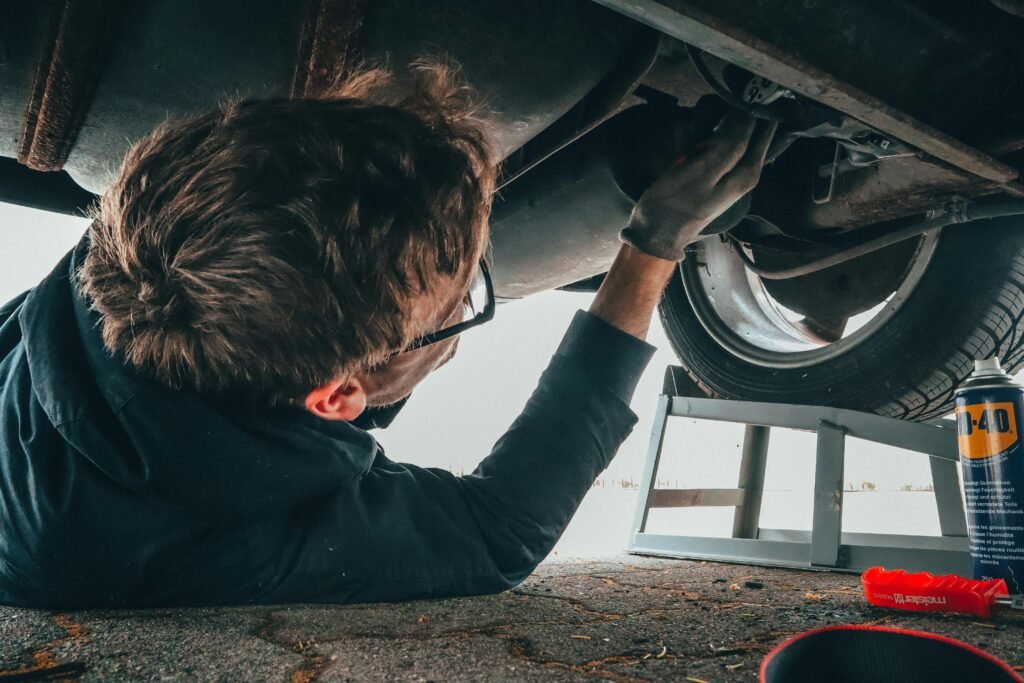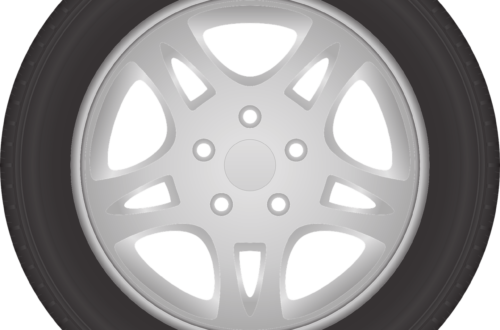Tires are an essential component of your vehicle, ensuring a safe and comfortable ride. To keep your tires in top shape throughout the year, it is crucial to prioritize seasonal tire maintenance. Whether it’s sweltering summer roads or icy winter conditions, expert advice for seasonal tire maintenance can help you navigate any road with confidence. From checking tire pressure to regular inspections and rotations, these simple yet effective tips will not only prolong the lifespan of your tires but also enhance your overall driving experience. So, buckle up and get ready to discover the secrets behind maintaining your tires like a pro.

This image is property of images.pexels.com.
Importance of Seasonal Tire Maintenance
Ensuring Safe and Efficient Driving
Taking care of your tires is vital for ensuring safe and efficient driving throughout the year. Proper maintenance helps to maintain traction, stability, and control, keeping you and your passengers safe on the road. By regularly checking your tires and maintaining the appropriate tread depth and tire pressure, you can reduce the risk of accidents caused by skidding or hydroplaning.
Prolonging the Lifespan of Your Tires
Seasonal tire maintenance not only enhances your safety but also helps to prolong the lifespan of your tires. By ensuring proper tread depth and tire pressure, you can minimize irregular and premature tire wear. This extends the life of your tires, saving you money in the long run since you won’t have to replace them as frequently.
Improving Fuel Efficiency
Proper seasonal tire maintenance also plays a significant role in improving fuel efficiency. When your tires are underinflated or worn out, your vehicle’s engine has to work harder to overcome the extra resistance. This can result in increased fuel consumption, costing you more money at the pump. By keeping your tires properly inflated and in good condition, you can maximize fuel efficiency and save money on fuel costs.
Checking Tire Tread Depth
Understanding Tire Tread Depth
Tire tread depth refers to the measurement of the depth of the grooves in your tires. It is crucial to maintain adequate tread depth for optimal traction and safe driving. As a general rule of thumb, new tires typically have a tread depth of around 10/32 of an inch. However, over time, the tread wears down, reducing the depth and compromising the tire’s ability to grip the road.
Using a Penny to Check Tread Depth
To check your tire tread depth, you can use a simple and commonly used technique involving a penny. Insert a penny into the tire’s tread with Lincoln’s head upside down. If the top of Lincoln’s head is visible, it indicates that the tire tread is worn, and it’s time to replace your tires. On the other hand, if the top of Lincoln’s head is covered by the tread, your tires still have sufficient depth and are safe to continue using.
Knowing When to Replace Tires
While the penny test provides a quick and easy way to check tire tread depth, it’s essential to know when to replace your tires even if they pass the test. Tires should generally be replaced when the tread depth reaches 2/32 of an inch. At this point, the tires no longer provide adequate traction, especially in wet or snowy conditions. To ensure your safety on the road, make it a habit to check your tire tread depth regularly and replace tires when necessary.
Inspecting Tire Pressure
Understanding Proper Tire Pressure
Maintaining the proper tire pressure is crucial for safe and efficient driving. Underinflated tires can result in decreased fuel efficiency, increased tire wear, and reduced handling capabilities. Overinflated tires, on the other hand, can lead to a harsh ride, decreased traction, and uneven tire wear. The correct tire pressure for your vehicle can usually be found in the owner’s manual or on a sticker located on the driver’s side door jamb or inside the glove compartment.
Using a Tire Pressure Gauge
To check your tire pressure, you will need a tire pressure gauge. These inexpensive tools are readily available at automotive supply stores or online. Simply remove the valve cap from each tire, place the tire pressure gauge onto the valve stem, and press firmly to obtain a reading. Compare the reading to the recommended tire pressure for your vehicle. If the pressure is too low, add air until it reaches the appropriate level. If it exceeds the recommended pressure, release air until it reaches the desired level.
Inflation Tips for Cold Weather
It’s essential to note that cold weather can cause tire pressure to drop. As temperatures drop, so does the tire pressure. To ensure that your tires have the proper inflation during the winter months, check the tire pressure more frequently and adjust as needed. This will help maintain optimal handling and safety in chilly conditions.
Ensuring Even Tire Wear
Understanding the Importance of Even Tire Wear
Having even tire wear is crucial for maintaining optimal performance and safety. When tires wear unevenly, it can lead to handling issues, reduced traction, and an overall compromised driving experience. By ensuring even tire wear, you can maximize the lifespan of your tires and enjoy a smoother and safer ride.
Rotating Tires Regularly
One effective way to promote even tire wear is to regularly rotate your tires. Tire rotation involves moving each tire from one position to another, typically from front to back or diagonally. By rotating the tires at regular intervals, you can equalize the amount of wear each tire receives. This allows all four tires to last longer and ensures that they wear evenly.
Alignment and Balancing
In addition to tire rotation, proper wheel alignment and balancing also contribute to even tire wear. Wheel alignment refers to adjusting the angles of the wheels to ensure they are parallel and perpendicular to each other. When your wheels are properly aligned, it reduces unnecessary tire wear and optimizes vehicle handling. Tire balancing, on the other hand, involves redistributing weight on the tire and wheel assembly to eliminate vibrations. Proper balancing further enhances tire performance and enables a smoother ride.

This image is property of images.pexels.com.
Performing Tire Rotation
Importance of Tire Rotation
Regular tire rotation is vital for maintaining even tread wear and maximizing the lifespan of your tires. By rotating your tires, you equalize the wear on each tire and prevent premature wear that may occur if they were left in the same position for an extended period. This helps to ensure that all four tires wear evenly and last longer, saving you money in the long run.
Rotating Pattern for Front-Wheel Drive Vehicles
For front-wheel drive vehicles, the recommended tire rotation pattern is moving the rear tires to the front, while the front tires are moved straight back and switch sides. This rotation pattern ensures that each tire experiences wear across different positions, promoting even tread wear and prolonging tire life.
Rotating Pattern for Rear-Wheel Drive Vehicles
For rear-wheel drive vehicles, the recommended tire rotation pattern is the opposite of front-wheel drive vehicles. In this case, you would move the front tires to the back and switch sides, while the rear tires move straight forward. By following this rotation pattern, you distribute the wear evenly among all four tires, optimizing their lifespan and performance.
Maintaining Proper Wheel Alignment
Signs of Misalignment
Maintaining proper wheel alignment is essential for tire longevity and optimal vehicle performance. Signs of misalignment include uneven tire wear, pulling to one side while driving, and a vibrating steering wheel. If you notice any of these signs, it is crucial to have your alignment checked by a professional to avoid further tire damage and ensure safe driving.
Benefits of Proper Alignment
Proper wheel alignment offers numerous benefits, including improved handling, better fuel efficiency, and extended tire life. When your wheels are aligned correctly, the tires can roll smoothly and evenly, reducing unnecessary tire wear. Additionally, proper alignment reduces strain on the suspension system and enhances overall vehicle stability and control.
Seeking Professional Alignment Services
While it is possible to check alignment visually, it is best to seek professional alignment services. Automotive technicians have specialized equipment and expertise to accurately measure and adjust wheel alignment. They can ensure that the wheels are properly aligned, maximizing tire performance and safety on the road.

This image is property of images.pexels.com.
Balancing Your Tires
Understanding Tire Balancing
Tire balancing is the process of evenly distributing the weight of a tire and wheel assembly. Over time, small imbalances may occur due to uneven tread wear, tire pressure changes, or even small bumps or impacts. These imbalances can cause vibrations and result in an uncomfortable and potentially unsafe driving experience. Balancing the tires eliminates these imbalances, ensuring a smooth ride.
Causes and Symptoms of Imbalanced Tires
Imbalanced tires can occur due to a variety of factors, such as uneven tread wear, tire damage, or improper mounting. Symptoms of imbalanced tires include vibrations felt in the steering wheel or throughout the vehicle at certain speeds. If you notice any vibrations, especially after hitting a pothole or curb, it is essential to have your tires balanced to restore optimal performance.
Getting Tires Balanced
Tire balancing is typically performed using specialized equipment, known as a wheel balancer. This equipment measures any imbalances in the tire and wheel assembly and determines the optimal placement of balance weights. The technician will attach small weights to the wheel to counterbalance any uneven weight distribution. By getting your tires balanced regularly, you can ensure a smooth and pleasant driving experience.
Storing Tires During Off-Seasons
Preparing Tires for Storage
If you live in an area with distinct seasons or plan to store your tires during certain months, proper tire storage is essential for maintaining their condition. Before storing your tires, ensure they are clean and dry. Remove any dirt, debris, or excess water to prevent damage during storage. Additionally, inspect the tires for any signs of damage or wear and address any issues before storing them.
Choosing the Right Storage Location
When selecting a storage location for your tires, it is important to consider certain factors. The ideal storage location should be cool, dry, and away from direct sunlight. Exposure to extreme temperatures or sunlight can accelerate tire aging and potentially lead to cracking or other damage. Additionally, choose a location that is not exposed to chemicals or solvents, as they may degrade the rubber compounds of the tires.
Storage Tips for Long-Term
If you plan to store your tires for an extended period, consider storing them off the ground to prevent flat spots. One option is to stack the tires on a pallet or use a tire rack. If you stack the tires, it is essential to rotate them periodically to prevent excessive stress on the bottom tire. Covering the tires with a clean tire bag or airtight plastic wrap can also protect them from dust, moisture, and other potentially damaging elements during long-term storage.
Replacing Damaged or Worn Out Tires
Inspecting for Tire Damage
Regular inspections are crucial for identifying tire damage and determining when it’s time to replace them. Inspect the tires for any visible signs of damage such as cuts, bulges, or sidewall cracks. Additionally, measure the tire tread depth using a tread depth gauge or consult a professional. If you notice any significant damage or if the tread depth is below the recommended minimum, it’s time to replace your tires.
When to Replace Tires
Determining when to replace tires depends on various factors, including tread wear, age, and damage. As mentioned earlier, it is generally recommended to replace tires when the tread depth reaches 2/32 of an inch. Additionally, tires should be replaced if they are older than six years, regardless of the tread depth. Age can cause rubber compounds to degrade, compromising tire performance and safety.
Choosing the Right Tires for Your Vehicle
When it comes to replacing tires, it is essential to choose the right ones for your vehicle. Consider factors such as climate, driving conditions, and your personal preferences. Different tire models offer different performance characteristics, such as enhanced grip on wet surfaces or improved fuel efficiency. Consulting with a tire professional can help you select the right tires that meet your specific needs and ensure a safe and enjoyable driving experience.
Consulting a Professional
When to Seek Professional Assistance
While performing some tire maintenance tasks on your own is possible, there are instances when it’s best to seek professional assistance. If you are unsure about any aspect of tire maintenance or notice significant tire damage or irregular wear, it is advisable to consult a professional. They have the expertise, knowledge, and proper equipment to address any issues and provide reliable advice.
Benefits of Professional Tire Maintenance
Professional tire maintenance offers several benefits. Firstly, professionals can accurately assess the condition of your tires and identify any potential problems. They can also provide expert advice on tire selection, inflation, and other maintenance practices to optimize tire performance. Additionally, professional tire services often offer specialized equipment and services, such as wheel alignment and balancing, ensuring your tires receive comprehensive care.
Finding a Reliable Tire Service Provider
To find a reliable tire service provider, consider seeking recommendations from friends, family, or trusted mechanics. Look for providers with a good reputation, positive customer reviews, and a track record of excellent service. It is also beneficial to choose a provider that offers a wide range of tire services, including installation, rotation, alignment, and balancing. By finding a reliable tire service provider, you can enjoy peace of mind, knowing that your tires are in safe and capable hands.
In conclusion, seasonal tire maintenance is of utmost importance for safe and efficient driving. By regularly checking tire tread depth, inspecting tire pressure, ensuring even tire wear, performing tire rotation, maintaining proper wheel alignment, balancing tires, storing tires correctly, replacing damaged or worn-out tires, and consulting professionals, you can maximize the lifespan of your tires, improve fuel efficiency, and ultimately enhance your driving experience. So, make it a priority to give your tires the attention they deserve and enjoy the benefits of proper seasonal tire maintenance.





